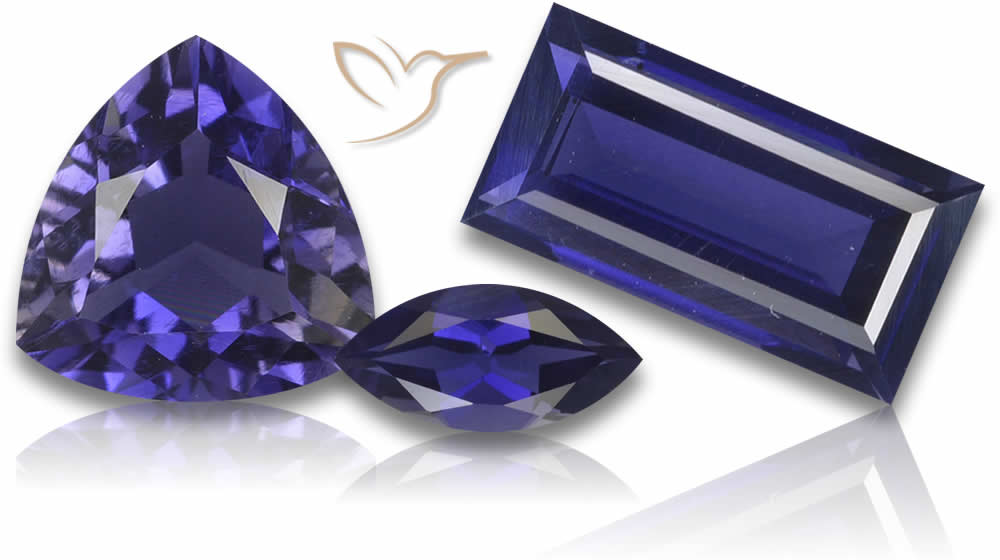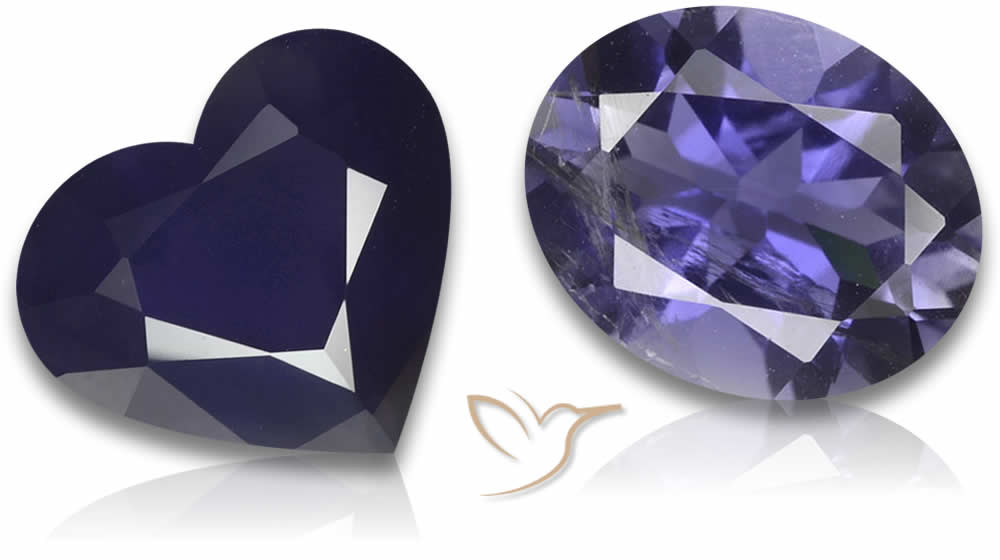堇青石宝石:事实与优点

欢迎来到我们关于美丽的全面指南堇青石宝石。在本文中,我们将探讨堇青石的含义和意义以及它在珠宝中的受欢迎程度。我们还将深入研究这种迷人宝石的各种优点,并提供有关护理堇青石珠宝的专家提示。
要点
- 堇青石是一种迷人的宝石,具有迷人的魅力。
- 堇青石首饰因其独特的美感和形而上学的特性而广受欢迎。
- 堇青石宝石具有多种益处,包括促进直觉、促进沟通和增强创造力。
- 适当的保养对于保持堇青石首饰的美丽和寿命至关重要。
- 堇青石宝石的价格可能会根据各种因素而变化,包括颜色、净度和尺寸。
堇青石宝石的属性和含义
令人惊叹的堇青石宝石拥有一系列独特的特性,使其深受宝石爱好者的追捧。
物理特性:堇青石是一种蓝色到紫色的宝石,在某些照明条件下可能呈现无色。它是一种多向色性宝石,从不同角度观看时会呈现不同的颜色,使其成为珠宝的理想选择。堇青石通常被切割成刻面宝石,为宝石本来就迷人的外观增添灿烂的光芒。
形而上学特性:堇青石通常与帮助打开和扩大第三眼脉轮、增强直觉和通灵能力有关。据说这种宝石还有助于内在成长、创造性表达以及改善与他人的沟通。
象征意义:据说堇青石代表着自我发现的旅程,解锁内在的力量领域并连接内在的智慧。它还被认为有助于精神成长、内在知识和增强心灵能力。
| 多色性 | 颜色 | 脉轮/治疗特性 |
|---|---|---|
| 是的 | 蓝紫色至无色 | 第三只眼,内在成长,精神成长,增强直觉,通灵能力 |
总体而言,堇青石宝石具有一系列独特的属性和含义,使其成为真正迷人的宝石。无论是因其物理特性还是形而上学特性而佩戴,堇青石都是一种永远令人着迷的宝石。
堇青石宝石的用途和优点
堇青石宝石极具吸引力且用途广泛,除单纯的装饰外,还具有许多优点和用途。通过佩戴堇青石或将其融入您的日常生活中,您可以体验到增强的幸福感和新的能量。以下是堇青石宝石的一些最常见的优点和用途:
身体治疗
堇青石通常用于帮助身体康复,帮助解决偏头痛、呼吸系统问题和肝脏疾病等问题。它还可以增强免疫系统,加速受伤或手术后的愈合过程。
情感和精神治疗
除了身体治疗之外,堇青石还可以提供情感和精神上的益处。众所周知,它可以增强自信、增强直觉、减少焦虑和压力。
表现
有些人认为堇青石具有显化特性,可以帮助个人实现梦想和目标。
创造力
堇青石还与创造力相关,帮助个人挖掘他们的艺术潜力并实现他们的想法。
珠宝制作
除了其形而上学的特性外,堇青石宝石还因其独特的美丽和多功能性而受到珠宝制造商的欢迎。堇青石可以被切割和塑造成各种形状,生产出可制作成项链、手链、耳环和戒指的精美作品。
总体而言,堇青石宝石为那些对其魅力和迷人品质持开放态度的人们提供了广泛的好处和用途。
堇青石宝石:迷人的事实和护理技巧
您是否想过堇青石宝石的起源和独特特征?本节包含有趣的事实和专家提示,可帮助您护理堇青石珠宝。
堇青石宝石的起源
堇青石这个名字源自希腊语“ios”,意思是紫罗兰。堇青石宝石产于挪威、斯里兰卡、印度以及非洲和南美洲的部分地区。历史上,维京人使用堇青石宝石作为导航工具,因为它们具有独特的偏振光能力。
堇青石宝石的特征
堇青石是一种透明宝石,有不同深浅的蓝色、紫色和灰色。它的莫氏硬度为 7-7.5,使其成为适合日常佩戴的耐用宝石。
保养您的堇青石首饰
堇青石首饰需要适当保养才能保持其美丽和寿命。避免将您的堇青石首饰暴露于刺激性化学物质、极端温度或突然撞击下。定期用柔软的湿布清洁您的堇青石首饰,并将其存放在干燥、安全的地方,以防止刮擦和损坏。
请遵循以下提示,以确保您的堇青石珠宝在未来几年内保持原始状态。

探索堇青石宝石首饰
堇青石首饰因其独特而独特的美丽而越来越受欢迎。当我们探索堇青石珠宝的世界时,您会对众多令人惊叹的设计和款式感到惊讶。
堇青石的突出特征之一是宝石独特的颜色。每颗堇青石宝石的色调从紫蓝色到灰蓝色不等,都是独一无二的。对于那些寻求与众不同、独特、脱颖而出的人来说,它是一颗完美的宝石。
堇青石首饰的价格可能会因多种因素而有很大差异。影响堇青石首饰价格的最重要因素是宝石的尺寸、切工、颜色和净度。宝石越大,价格越高。此外,颜色越浓烈、越鲜艳,宝石的价值就越高。
堇青石珠宝款式
堇青石的用途非常广泛,可用于不同类型的珠宝,例如项链、耳环、手链和戒指。堇青石宝石独特的颜色使其非常适合经典和现代设计。此外,它还可以与其他宝石搭配,打造出令人惊叹和时尚的外观。
| 首饰类型 | 描述 |
|---|---|
| 耳环 | 从简单的耳钉到优雅的吊式耳环,堇青石都能完美搭配任何耳环款式。 |
| 戒指 | 堇青石非常漂亮且耐用,非常适合制作订婚戒指和结婚戒指。 |
| 项链 | 堇青石可用于制作传统的单石吊坠或独特而现代的项链设计。 |
| 手链 | 堇青石的亮蓝色使其非常适合简单的手链或更精致的设计。 |
无论您喜欢经典还是现代设计,总有一款堇青石珠宝适合您的喜好和风格。
与任何其他宝石首饰一样,必须妥善保养您的堇青石首饰,以保持其最佳外观。在进行任何身体活动之前,请务必摘下堇青石首饰,因为碎屑和汗水可能会造成损坏。定期用温和的肥皂和水清洁您的堇青石首饰也很重要,并避免将其暴露在刺激性化学物质或极端温度下。
总体而言,对于那些寻找独特、美丽、引人注目的作品的人来说,堇青石珠宝是一个绝佳的选择。其独特的色彩和百搭的款式使其非常适合各种场合,从日常穿着到特殊活动。
结论
在我们结束关于堇青石宝石的综合指南时,我们希望它能够阐明这种迷人宝石的吸引力和优点。从其令人惊叹的物理特性到其形而上学特性和治疗功效,堇青石确实是一种值得探索的宝石。
在告别之前,让我们先来了解一下堇青石的起源。这种宝石由法国矿物学家 Jean-Claude Delamétherie 于 1813 年首次发现。它被命名为“iolite”,源自希腊语“ios”,意思是“紫罗兰”,以及“lithos”,意思是“石头”。
凭借其丰富的历史和卓越的特性,堇青石继续令宝石爱好者和珠宝爱好者惊叹不已。我们希望本指南能够加深您对堇青石宝石的了解和欣赏,并启发您进一步探索它的美丽。
常问问题
堇青石宝石的含义是什么?
堇青石宝石以其精神特性而闻名,通常与内在视觉、直觉和个人成长联系在一起。人们相信它可以增强一个人的心灵能力并有助于克服挑战。
堇青石宝石价格是多少?
堇青石宝石的定价通常与其净度、切工和克拉重量相关。堇青石以其从宝石蓝到紫罗兰色的令人惊叹的色调而闻名,它为一些蓝色宝石提供了更实惠的替代品。了解其价格可以帮助买家在投资蓝色宝石时做出明智的选择。堇青石的起价为每克拉 3 美元。
堇青石宝石有何特性?
堇青石宝石呈现出令人惊叹的蓝色至紫色,并具有透明至半透明的外观。它具有很强的多色性,从不同角度观察时呈现出不同的颜色。它还以其强大的耐用性而闻名,莫氏硬度为 7-7.5。
堇青石宝石有哪些形而上学性质?
堇青石宝石被认为可以增强心灵能力、刺激精神成长并促进思维清晰。它被认为是变革之石,可以帮助个人克服挑战并拥抱生活中的积极变化。
堇青石宝石有什么好处?
据说堇青石宝石具有多种好处,包括促进自我发现、增强直觉和支持情感治疗。它还被认为可以增强创造力、激发想象力、改善沟通和关系。
关于堇青石宝石有哪些有趣的事实?
堇青石宝石俗称“维京指南针”,因为据信维京探险家在阴天时使用堇青石来导航和定位太阳。至于护理,堇青石应使用温和的肥皂和水轻轻清洁。避免使用刺激性化学品或超声波清洁剂,因为它们可能会损坏石头。
哪些因素会影响堇青石首饰的价格?
堇青石首饰的价格可能受到多种因素的影响,包括堇青石宝石的质量和尺寸、切工和净度以及首饰的设计和工艺。此外,市场需求和供应也会影响价格。
堇青石宝石产地在哪里?
堇青石矿床遍布世界各地。如今,大多数堇青石宝石均来自印度,但其他一些重要产地包括澳大利亚(北领地)、巴西、加拿大(黄刀)、马达加斯加、缅甸、纳米比亚、斯里兰卡(锡兰)、坦桑尼亚和美国,包括怀俄明州和康涅狄格州。






